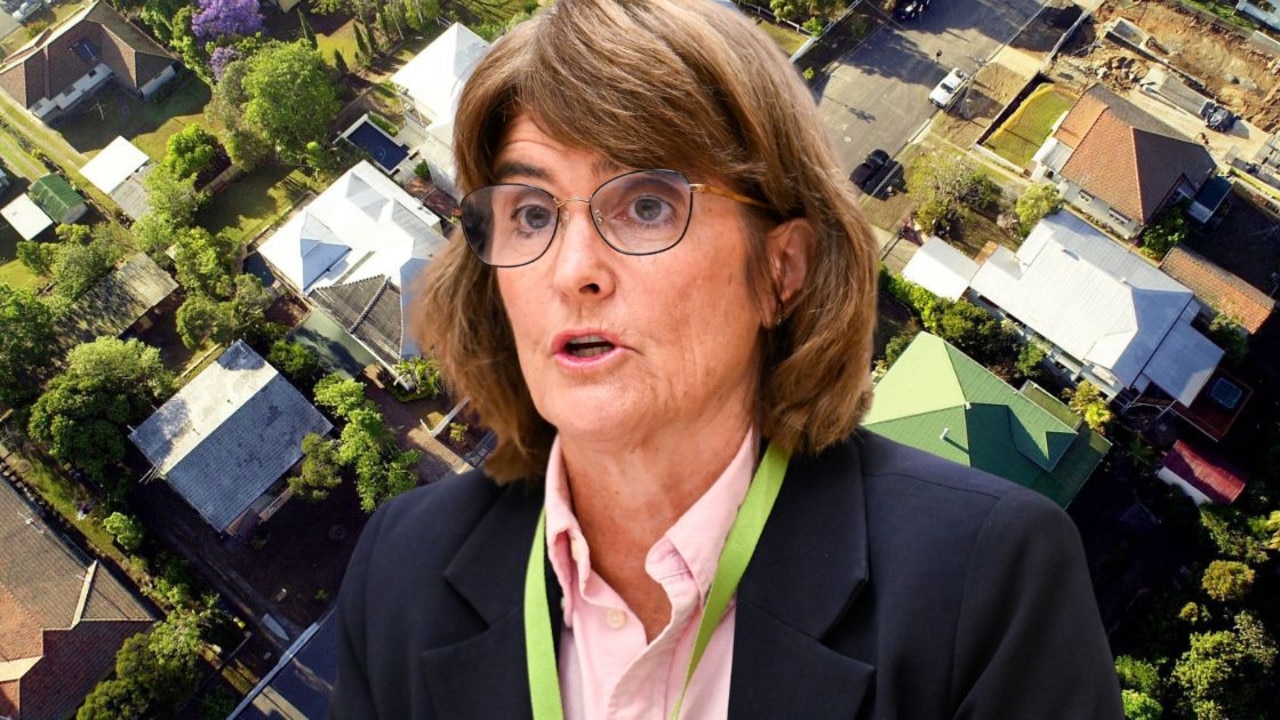Qld apartment sector in dire straits due to shoddy construction
Queensland’s apartment sector is rife with defects due to shoddy construction work, and holding anyone to account is almost impossible.
CM Insight
Don't miss out on the headlines from CM Insight. Followed categories will be added to My News.
A fire protection system in a Sunshine Coast unit block was installed back to front and in a blaze would have sprayed water on to the road, not the burning building.
The shocking bungle was one of dozens of defects exposed by Samantha Reece, director of the Australian Apartment Advocacy group.
AAA is yet another group that has lost confidence in the State Government’s failed building regulator, the Queensland Building and Construction Commission.
“We need to see changes in the QBCC,” Reece said.
“It’s gone from worse to worse. A major overhaul is needed, and it must be pronto.
“There is a building defect crisis in Queensland.’’
Queensland’s leading independent fire and building expert Stephen Burton, agrees.
“It’s a sick industry,” he said.
The state government building watchdog wasn’t helping, he said.
“We are trying to support the QBCC, not tear it down.”

Reece called for an inquiry.
It was another blow to failed regulator which was recently accused of acting corruptly by Opposition housing and public works spokesman Tim Mander.
Burton backs Reece, and, with others, they have formed the Queensland Apartment Defect Advisory Group to monitor defects.
They will be busy.
From his own business inspections Burton compiled a hit parade of defects he discovered when asked to investigate.
In one Brisbane building an emergency fire exit staircase was dangerously corroded, while the exit door and ceiling failed fire rating tests.
The repairs remain incomplete after eight years, despite a rectification order by the blundering building regulator.
Burton also warned that incorrectly installed water pumps were exploding frequently in the basements of unit blocks, making them useless in a fire emergency.
On a tour with Burton, I saw bolts missing from steel support beams.

I’ve seen mysterious cracks in concrete and crumbling concrete walls.
I saw tiles laid over hollow walls and ponding in underground basement car parks where walls were falling apart.
At one building, a vital drain was missing, and water seeped below the foundations.
The gap was so wide Burton was able to fit his hand into the crack.
At one building he held up a large chunk of rusted metal that had come away from a corroded stairwell leading to an emergency exit.
The list goes on and on: Internal water leaks in apartments in rainy weather – source not found; carpets wrecked; water gushing into apartments in rain due to poorly fitted windows or drainage problems above.
Burton blames greedy developers cutting corners to cash in on the boom in the apartment market.
He and Reece say building regulators have failed lamentably to police shoddy work.
Worse still, they failed to check that rectifications had been completed.


And someone who had completed a two-day internet course could become an instant expert.
There was often no expertise to ensure repairs had been adequately carried out.
There was little follow-up after shoddy work had been uncovered.
“There are lots of traps for the unwary,’’ said Burton, a leading independent fire and building safety engineer.
“Whether you are in Tasmania, Victoria or Queensland it’s the same.
“The fundamentals are screwed.’’
There was no policing or licensing system that worked.
Many builders rushing from one job to the next did not try to rectify faults.
“They know they can get away with it,” he said.
“And we are talking about apartments. I haven’t even started talking about offices, warehouses and shopping centres.
“There are problems in every sector.
“And it’s big money. When we talk about the building industry we are talking trillions.”


The QBCC paid out $16.6 million last year under its home warranty scheme, which applies only to buildings three storeys or less.
A blame game has started. Failure to complete repairs has led to bitter disputes over whether developers, builders or subcontractors were responsible for faults.
The repair bill for defects in one building was $3 million, Reece said.
Bodies corporates have found themselves entangled in expensive court cases.
Many unit owners declined to speak on the record for fear of damaging their property values.
They remained hopeful that many minor defects could be satisfactorily repaired.
Other problems persist. Concrete cancer is rampant on the coasts.
Flammable cladding is still a major problem in apartments and other buildings.
Hundreds of kilometres of inferior Chinese electrical cable said to cause fires remains unaccounted for.
So, too, are poor-quality Chinese glass sheets that easily shatter.
PUMP EXPLOSION RISK
Water pumps in fire protection systems “frequently” explode, posing serious but hidden risks to many apartment dwellers, Queensland’s most respected and independent fire expert warns.
Stephen Burton said there simply wasn’t the expertise to install fire protection systems correctly, or to repair them after faults had been identified. In a recent report he completed for a Brisbane building he said: “The air-cooled diesel fire pump sits in a dedicated fire-rated room, with two small openings (for ventilation) which are not suited to a radiator pump.
“The radiator must be ducted directly to outside. If the pump runs, it will heat up rapidly, and if not ventilated, the room keeps heating up.
“The two wall vents have thermal links that shut above 100C so the radiator can’t get cool air.
“It can blow up the engine before it runs out of fuel. This occurs frequently from incorrectly installed and selected fire equipment.’’
He said the replacement cost to body corporates was about $40,000.
APARTMENTS PLAGUED BY PROBLEMS
Nearly half of all Queensland apartment buyers and renters (49 per cent) said their units had defects.
The most common defect is water penetration from outside, says Samantha Reece from the Australian Apartment Advocacy group.
Unit owners could be suspicious if water ponded or cascaded over balconies in rain, she said.
Reece said a survey by the advocacy group found only 36 per cent of those who have experienced defects had them all fixed.
A total of 47 per cent said some were fixed and some not.
Worryingly, 17 per cent said none of their defects had been fixed despite complaints.
The most common complaints:
● Poor waterproofing
● Mould
● Defective plumbing
● External noise
● Structural cracking
● Water penetration from outside
● Faulty guttering
● Defective roofing
● Uneven tiling, cracked tiles
● Defective balustrades on balconies
● Defective fire protection system
● External cladding not fireproofed
● Inadequate or poorly installed airconditioning systems
● Multiple problems with electrical works
● Concrete cancer
● Wooden flooring warping
● Car park asphalt lifting
● Multiple problems with doors and elevators
● Ill-fitting sliding doors and windows that don’t close
Des Houghton is an independent media consultant and a former editor of The Courier-Mail, Sunday Mail, Sunday Sun and Gold Coast Sun





